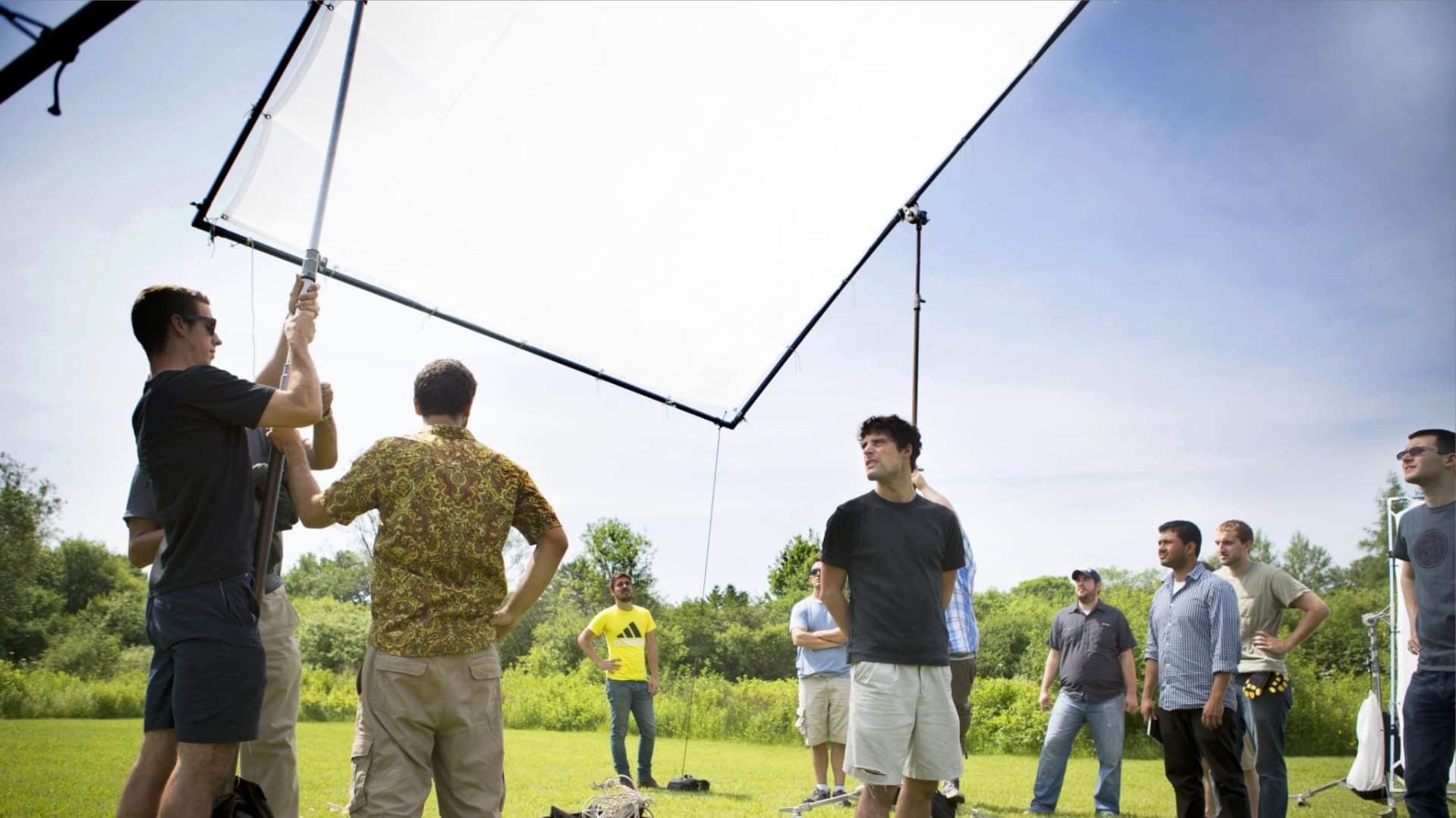Grips play a vital role in ensuring the smooth operation of the technical and logistical aspects of a shoot. Grips are responsible for setting up, maintaining, and operating various equipment that supports the cameras and lighting. They are the unsung heroes who work behind the scenes to ensure that everything runs seamlessly, allowing the creative vision to come to life. This article delves into the diverse responsibilities of a grip, highlighting their significance, required skills, and the impact they have on the overall production.
The Role of a Grip in Broadcast
Grips are essential members of the production team who handle all non-electrical equipment that modifies the lighting or camera setups. They work closely with the camera and lighting departments to provide the necessary support for achieving the desired shots and effects. Here’s a detailed look at their key responsibilities:
- Pre-Production Planning
- Equipment Preparation: Grips prepare and organize all necessary equipment, such as stands, rigs, dollies, cranes, and track systems. They ensure that everything is in working order and ready for the shoot.
- Location Scouting: They assist in scouting locations to determine the best places to set up equipment. This helps in planning how to safely and effectively position gear in different environments.
- Setup Planning: Grips work with the director of photography (DP) and the gaffer to plan how to rig and support lights, cameras, and other equipment. They devise strategies for achieving the required shots.
- Technical Setup
- Rigging Equipment: Grips are responsible for rigging lights, cameras, and other equipment. This includes setting up stands, cranes, dollies, and track systems, as well as securing lights and diffusers.
- Camera Support: They provide support for camera movements, operating equipment such as dollies, cranes, and jibs to achieve smooth and dynamic shots. They also set up tripods and other camera stabilization gear.
- Safety: Ensuring safety on set is a critical part of a grip’s job. They secure equipment to prevent accidents and ensure that all setups comply with safety protocols.
- Production Execution
- Adjustments and Modifications: During production, grips make necessary adjustments to the equipment setup as required by the DP or gaffer. This can involve repositioning lights, modifying rigs, or setting up new camera angles.
- Operating Equipment: Grips operate various pieces of equipment, such as dollies and cranes, to execute complex camera movements. They ensure that these movements are smooth and precise.
- Problem-Solving: They troubleshoot any issues that arise with the equipment, making quick fixes to avoid delays in the production schedule.
- Post-Production Wrap-Up
- Equipment Breakdown: After filming, grips are responsible for breaking down all equipment and packing it safely for transport. They ensure that all gear is accounted for and properly maintained.
- Inventory Management: Grips update the inventory, noting any equipment that needs repair or replacement. They ensure that all gear is ready for future use.
Key Skills Required for a Grip
Being an effective grip requires a combination of technical knowledge, physical strength, and problem-solving abilities. Here are some of the most critical skills needed:
- Technical Proficiency: Grips must have a thorough understanding of various types of rigging and camera support equipment, including how to set it up and operate it.
- Physical Strength: The role often involves heavy lifting and manual labor, requiring good physical fitness and stamina.
- Problem-Solving: The ability to quickly address and resolve technical issues is vital, especially during live broadcasts or tight shooting schedules.
- Attention to Detail: Precision and attention to detail are essential to ensure that all setups are executed safely and correctly.
- Communication: Effective communication with the DP, gaffer, and other crew members is crucial for ensuring that all tasks are carried out smoothly.
The Impact of a Grip
The grip’s role is central to the technical execution of a broadcast. Their work directly influences the efficiency and safety of the production. Here are some ways grips make a significant impact:
- Visual Quality: By providing stable and dynamic camera support, grips enhance the overall visual quality of the broadcast, making it more engaging and professional.
- Efficiency: Efficient management of equipment and setups ensures that productions run smoothly, minimizing downtime and delays.
- Safety: Grips enforce safety protocols, ensuring that all setups are secure and that the cast and crew are protected from potential hazards.
- Support for Creative Vision: By assisting the DP and gaffer, grips help achieve the desired visual aesthetic and support the creative vision of the production.
The Grip’s Workflow in Broadcast Production
To understand the role of a grip, it’s essential to look at their workflow in detail, from pre-production to post-production.
- Pre-Production Phase
- Preparation: Grips prepare all necessary equipment, ensuring everything is in working order and ready for transport to the location.
- Location Scouting: They assist in scouting locations to determine the best places to set up equipment and assess any potential challenges.
- Setup Planning: Grips work with the DP and gaffer to plan the rigging and support setups, ensuring they align with the creative and technical requirements of the production.
- Production Phase
- Setup: Grips set up all necessary rigging and camera support equipment according to the lighting plot and the DP’s or gaffer’s instructions. This includes assembling and positioning stands, cranes, dollies, and other gear.
- Operation: They operate equipment such as dollies and cranes to execute complex camera movements, ensuring that these movements are smooth and precise.
- Adjustments: Grips make real-time adjustments to the equipment setup as required by the DP or gaffer. They ensure that all changes are implemented quickly and accurately.
- Post-Production Phase
- Breakdown: After filming, grips oversee the breakdown and packing of all equipment, ensuring it is stored and transported correctly.
- Inventory Management: They update the inventory, noting any equipment that needs repair or replacement, and ensuring all gear is accounted for and ready for future use.
The Evolution of the Grip’s Role
The role of the grip has evolved significantly with advancements in technology and changes in production methods. Today’s grips must stay updated with the latest tools and techniques in the industry:
- Advanced Rigging Techniques: The adoption of advanced rigging techniques and equipment has expanded the capabilities of grips, allowing for more complex and dynamic setups.
- Digital Control Systems: Modern control systems enable more precise and dynamic control of camera movements, making it essential for grips to be proficient in using these technologies.
- Sustainable Practices: There is a growing emphasis on sustainable production practices, with grips playing a role in reducing waste and minimizing the environmental impact of their work.
Real-World Examples of Grips
To illustrate the impact and responsibilities of grips, let’s look at some real-world examples:
- Television Studios
- Grip’s Role: In television studios, grips support the DP and gaffer in setting up and managing the rigging and camera support for various types of shows, including news broadcasts, talk shows, and game shows. They ensure that all equipment is functioning correctly and safely.
- Challenges: Studio productions require quick adjustments and efficient management of equipment to accommodate different setups and formats.
- Film Production
- Grip’s Role: In film production, grips work closely with the DP and gaffer to create the desired camera movements and lighting effects for each scene. They manage the technical aspects of the rigging and camera support setups.
- Challenges: Film production often involves complex setups and coordination with other departments. Grips must ensure that all rigging is consistent, safe, and enhances the visual storytelling.
- Concerts and Live Performances
- Grip’s Role: For concerts and live performances, grips assist in designing and implementing dynamic rigging and camera support setups that enhance the visual impact of the show. They coordinate with the production team to ensure that all movements and effects are synchronized with the performance.
- Challenges: Live performances require precise execution of camera movements and quick adjustments to match the music and choreography.
Conclusion
The role of a grip in broadcast is multifaceted and essential to the success of any production. Grips are the technical experts who manage the rigging and camera support setups, ensuring that all equipment is positioned safely and effectively. Their responsibilities span technical, practical, and logistical tasks, requiring a unique blend of skills and expertise.
Grips play a crucial role in ensuring high-quality visual content, contributing significantly to the overall impact and success of the broadcast. Their work enhances the narrative, engages the audience, and ensures that the production runs smoothly and safely.






Leave a Reply